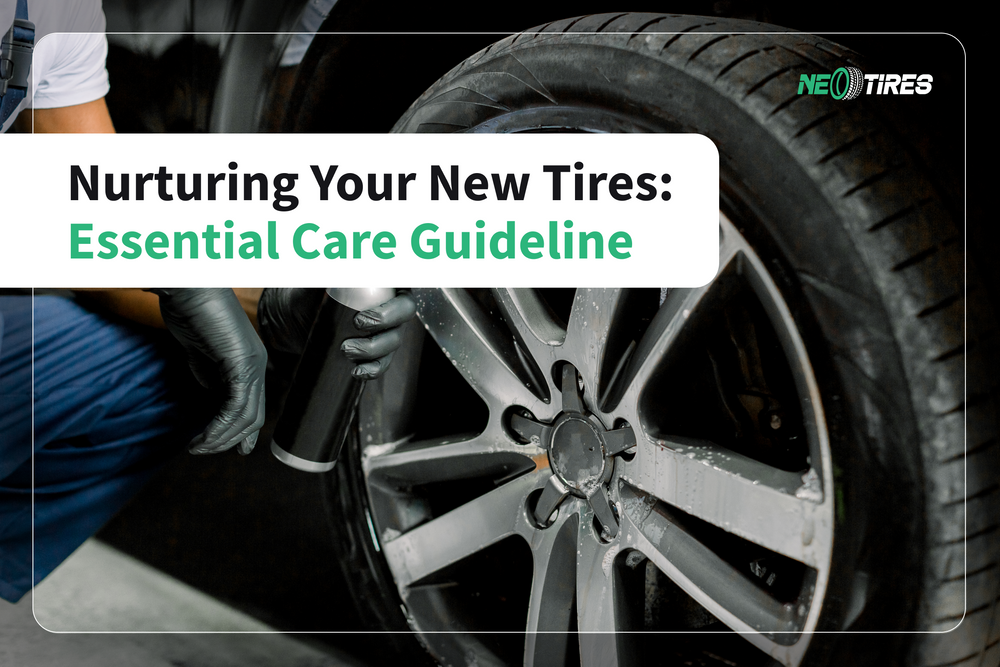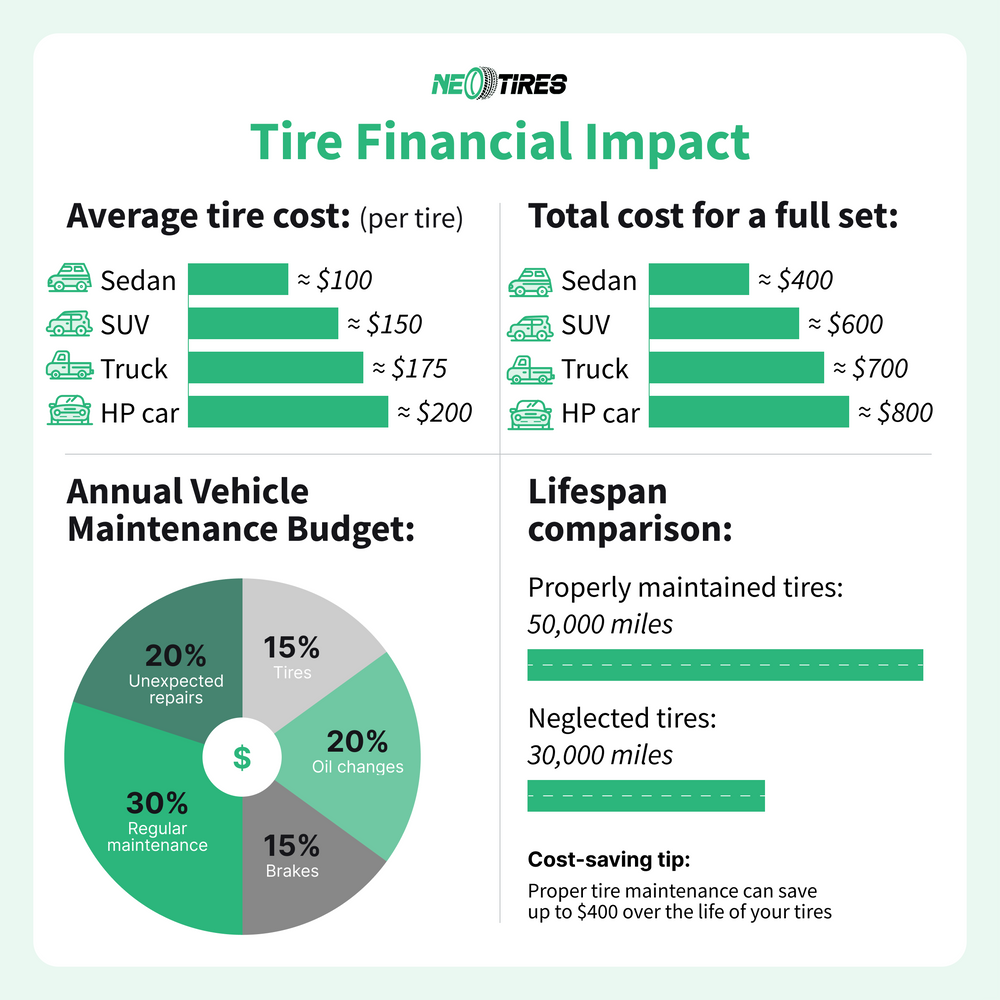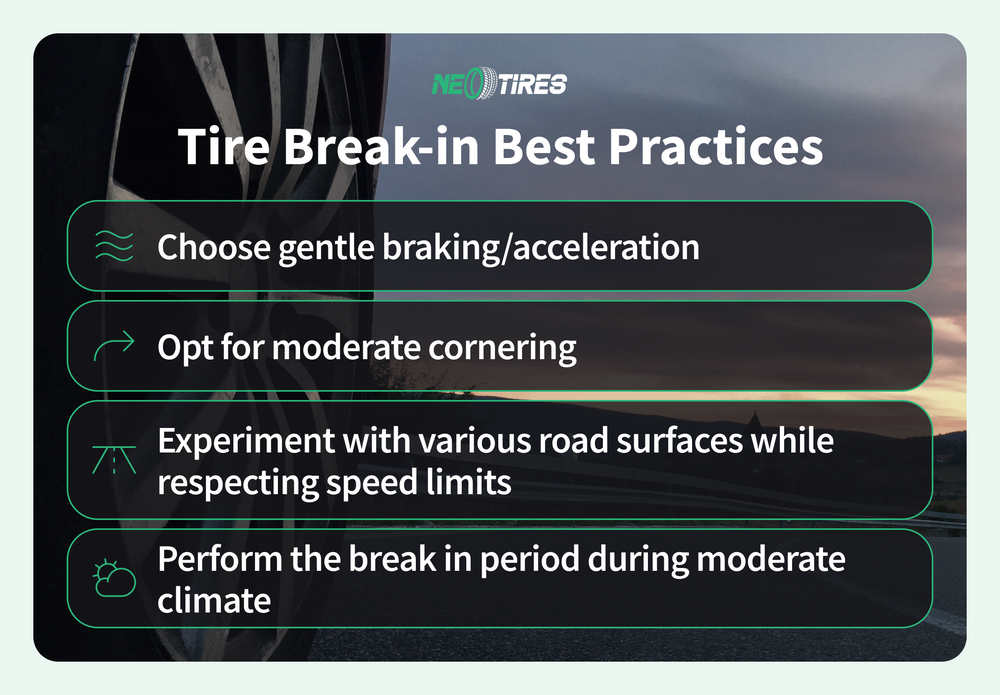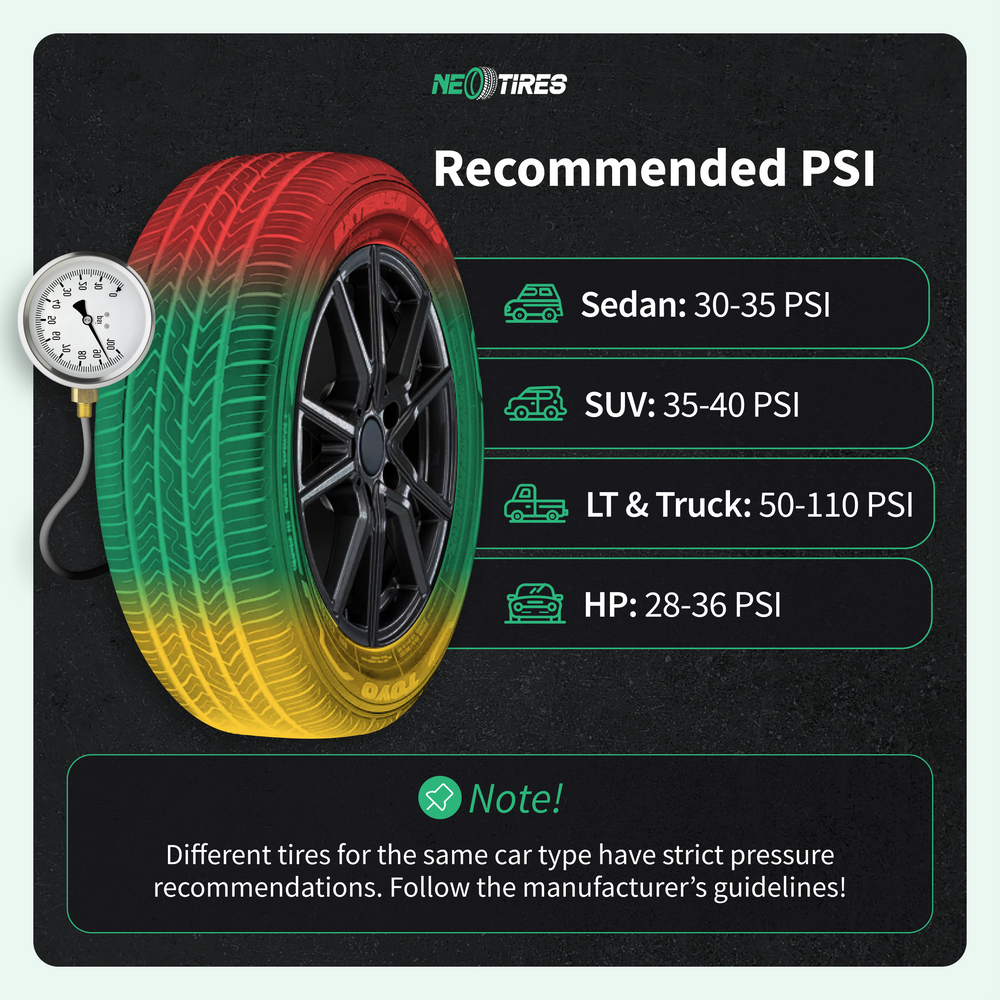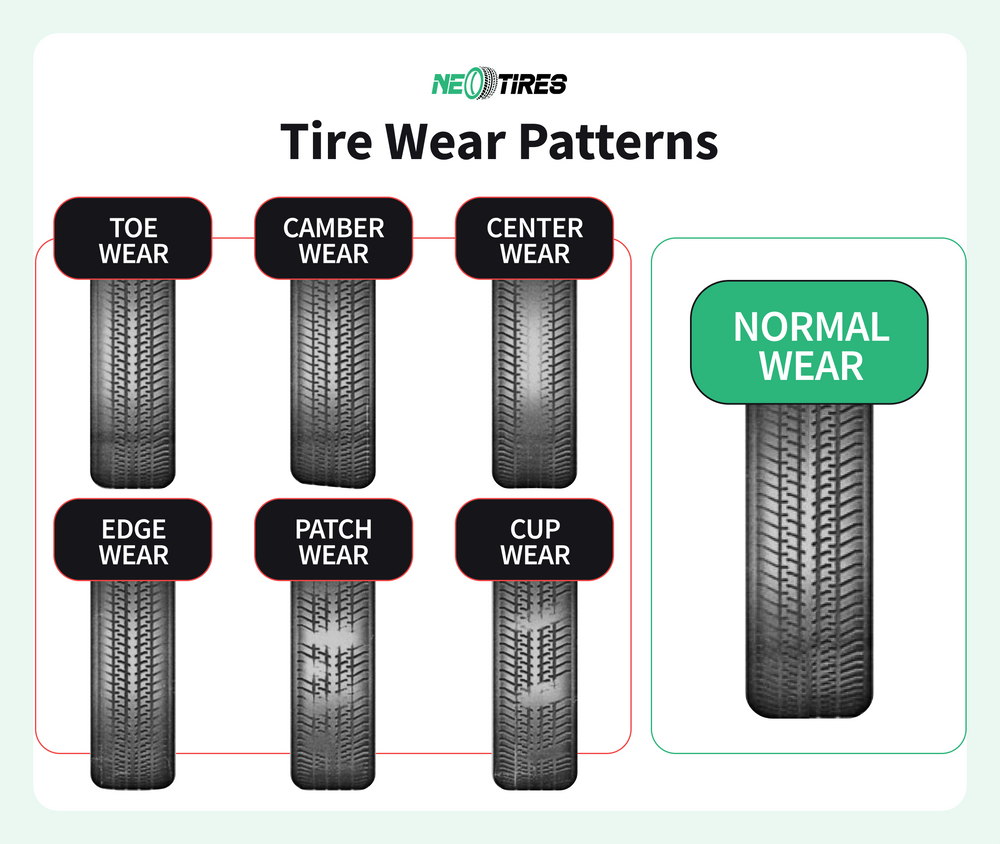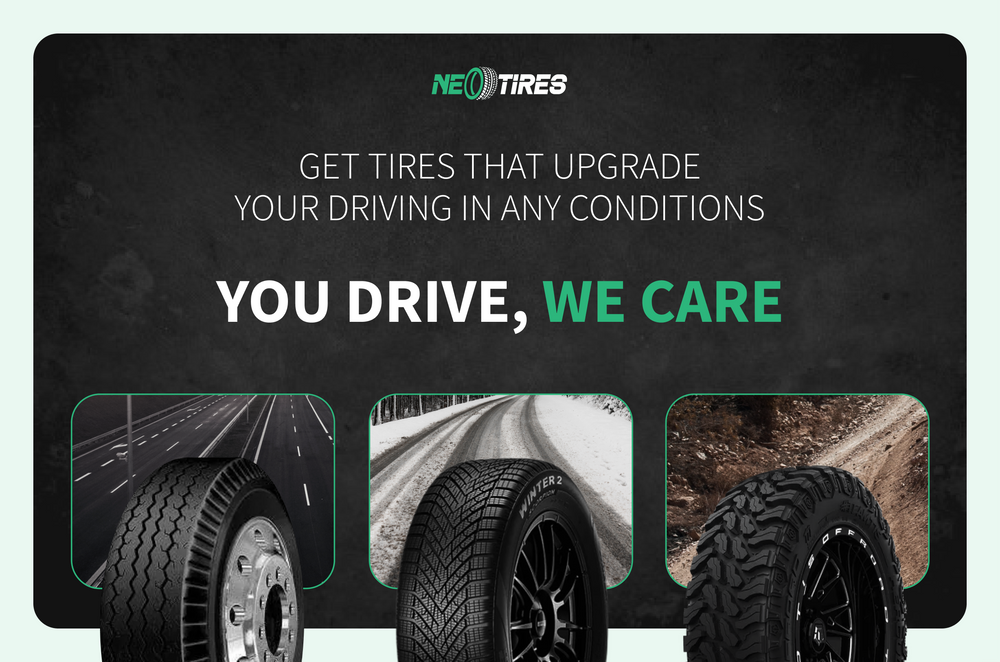Buying new tires is often a blow to every driver's budget, costing hundreds to even thousands of dollars. Every driver wants his tires to last as long as possible to make the investment worthwhile. Thus, proper care during the initial phase is imperative for ensuring future safety, performance, and tire longevity.
This section focuses on how to treat your new tires so that you can get the most out of your purchase. With the guidelines below, you can extend your tire life while ensuring optimal handling, decent fuel efficiency, and safety.
Why New Tires Require Special Attention
Tire Chemical Composition
After leaving the factory, new tires contain specific release agents like silicone-based compounds. These help tires release from the molds during manufacturing. While the agents are mandatory for the production process, they are expected to reduce traction during the first period of use. As such, these compounds might take some time to wear off until the actual tire grip properties emerge.
Tire Tread Conditioning
The tire tread needs time to adapt to road conditions after leaving the factory. The tread surface requires several hundred miles to develop micro-abrasions that will later ensure optimal grip. "Scuffing" is a more popular term for this process and is very important for the tire's overall performance, especially in wet conditions. The whole process optimizes the connection between the vehicle with the new tires and the contact with the road to unleash optimal performance.
Tire Structural Settlement
The internal architecture of a new tire needs some time to settle into its working position. Steel belts, bead bundles, fabric plies, and all the others need various driving forces to settle. This can only be achieved through some driving experience through which the tire is subjected to acceleration, braking, and cornering on multiple surfaces. Consequently, the break-in period allows the internal structure to align optimally, increasing the degree of even wear and further consistent performance.
The Critical Break-in Period For Tires
How Long Before New Tires Break In?
It takes about 500 miles for a new tire to break in. The process varies depending on the tire type, vehicle specs, or road conditions. Certain high-performance tires, for example, might need up to 1,000 miles to break in.
How To Properly Break In Tires? Recommended Practices
The following four practices for the first 500-1000 miles will help your tires have a smooth break-in process. Here is what you shall do :
Avoid aggressive braking and acceleration. Give your tires gentle inputs, allowing them to warm up and cool down gradually.
Drive gently in corners and curbs, ensuring moderate speed. Your tire tread needs to adapt to lateral forces gradually, allowing the sidewalls to flex appropriately.
Experiment with various speeds and road surfaces. This allows the tires to adapt to a wide variety of driving conditions.
Break in your tires in moderate climate conditions. Extreme cold or heat could impact the break-in process.
Why Do You Need To Break In Tires?
The break-in process positively impacts tire even wear, potentially prolonging your tire life and better handling. The overall tire performance will likely increase due to proper settling and cure of the tire compounds. Fuel economy in the long run due to even wear is an additional benefit.
Initial Tire Pressure Setting and Monitoring
First Tire Inflation
New tires tend to lose some PSI in the first weeks. This happens because of the natural seepage through the rubber as the tire compounds are in their break-in phase. Pressure correction after installation and close monitoring is highly recommended in the first weeks.
Frequent Tire Pressure Checks
A weekly pressure check is recommended in the first month after the new tire installation. You can gradually reduce the frequency to twice a month after making sure the tires no longer lose air. Checking and adjusting the pressure when the tires are cold is best. Opt for a quality pressure gauge and monitor closely any unusual air loss, as this might suggest a valve stem issue.
Impact on Performance
Pressure monitoring in the first period is essential to set the foundation for further tire even wear and consistent tire performance. Ignoring doing so leads to adverse effects such as rapid, uneven wear and higher rolling resistance. Both underinflation and overinflation are direct premises for tire uneven wear and handling issues. Learn more about the Research Gate studies on tire pressure and its impact on vehicle performance.
Early Tire Wear Pattern Observation
Importance of Early Tire Wear Detection
Rarely, tires may develop uneven wear in the first 1,000 miles. This may suggest alignment and/or balance issues that you must correct immediately. Precisely for this reason, monitoring the tread during the first thousands of miles is recommended. Early identification of alignment problems saves you from premature tire replacement due to uneven wear patterns.
What to Look For In The Tire Wear
The following four wear patterns suggest that the tires are subject to a process of premature uneven wear: one-sided wear, scalloped edges, and outer and center wear. You should take measures immediately if you face one:
One-sided wear: An alignment issue is likely if one side of the tire wears out faster than the other;
Scalloped edges: Suspension or balance issues are likely if the tire starts to develop a wavy pattern along the tire edge;
Outer edge wear: Underinflation is likely if the tire wears on both outer edges;
Center wear: Overinflation is likely if the center tread wears excessively.
Tire Break In Special Considerations
High-Performance Tires' Break In
High-performance tires have a softer rubber formula than the rest. Their break-in phase can be longer than in the case of other types. Gentle driving with HP tires is recommended, especially in cornerings, until you reach 1,000 miles. This helps prevent premature tire tearing or chunking.
All-Season Tires' Break In
All-season tires are generally versatile in their break-in phase. They adapt relatively quickly to roads and driving forces. Even if more forgiving, we recommend being cautious with all-season tires as they also need a specific time to settle in. Be careful, especially on wet roads, as there is where you might feel them the most susceptible.
Winter Tires' Break In
We recommend maximum caution with winter tires if you mount them in extreme temperatures. While they are specially designed for such conditions, they still need careful break-ins, especially on slippery roads. Winter tires are specifically designed to stay flexible and grippy in snowy weather. However, their brand-new condition might not be at its peak performance for the first couple of weeks.
First Tire Rotation During Break-In Period
Consider the first tire rotation with your new tires at 3,000-4,000 miles to detect any minor imperfections early to ensure consistent initial performance. After this initial rotation, you can return to the recommended schedule at 5,000-8,000 miles.
Initial Tire Alignment During Break-In Period
Consider the initial alignment after the first 1,000 miles with your new tires. This will give you peace of mind about their proper setup. A qualified mechanic might spot alignment issues that did not occur with the previous tires. United Tires and Service recommends alignment right after installing new tires. While this is not mandatory, ensuring even wear, fuel efficiency, and service life optimization is highly recommended.
Ready for Fresh Tires That Deserve Your Care?
If it's time to set for new tires, NeoTires offers top-tier products designed to serve you in any condition at affordable prices.
Browse our online selection to find the perfect tires for your vehicle. We'll deliver them right to your doorstep. Call us whenever you need guidance; our trained assistants will find the best match for your needs and budget!
Why Trust Us?
NeoTires is a trusted ally in everything related to the tire industry. Our team brings years of industry experience to every product, review, and article we publish. We have an unbiased attitude towards our activity, which is based on the following pillars:
• Expert Knowledge: our group includes tire specialists and automotive enthusiasts with a qualified understanding of the nuances of the tire sector;
• Unbiased Reviews: our content is free of third-party interests and is based exclusively on objective and honest assessments;
• Credible Sources: we draw our inspiration exclusively from credible sources such as Consumer Report, Tire Technology International, as well as reputable tire brands/ independent automotive organizations;
• Customer-Oriented Approach: we focus on customers' needs and offer them practical and professional advice for a long-term collaboration.
Trust in our expertise to guide you through the tire industry with clarity and integrity. Learn more about our philosophy here. Drive safe and choose your tires wisely!




